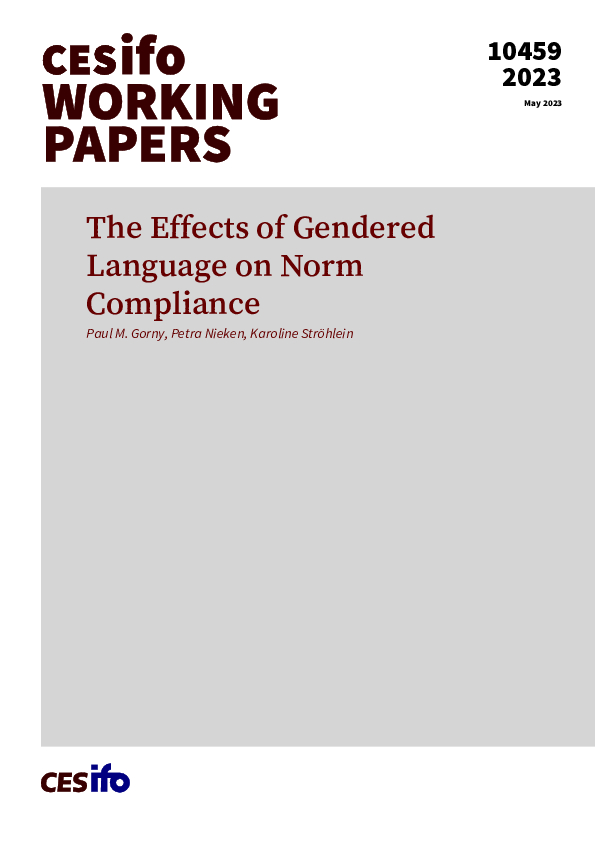The Effects of Gendered Language on Norm Compliance
CESifo, Munich, 2023
CESifo Working Paper No. 10459

Social norms, though often implicit, are to a great extent communicated and made salient using natural language. They carry the notions that “the participant,” “the customer,” or “the worker” should behave in a certain way. In English, we refer to each of these personal entity nouns using the pronouns “he,” “she,” or the gender-inclusive singular “they.” In languages with grammatical gender, the nouns and the grammatical structure they are embedded in mark them as either male, female, or gender-inclusive. Little is known as to whether the framing of norms with respect to these grammatical genders affects norm compliance. We conducted an experiment in German with three games commonly used to study fair sharing, cooperation, and honesty. Our treatments allowed us to compare the differences in the increase of norm compliance when introducing prescriptive norms depending on the match between the participant’s self-reported gender and the gender frame used in the experimental instructions. Overall, we find no strong evidence that a match between the participant’s self-reported gender and the norm formulation led to a higher increase in norm compliance compared to the differences in a mismatch or gender-inclusive frame. We observed the strongest effect for men in the sharing game, where the data suggests that a match led to a higher increase in norm compliance compared to the increase if gender-inclusive formulations were used. This line of research has important implications for the effective communication of rules and norms in organizations and administrations.
Empirical and Theoretical Methods
Behavioural Economics